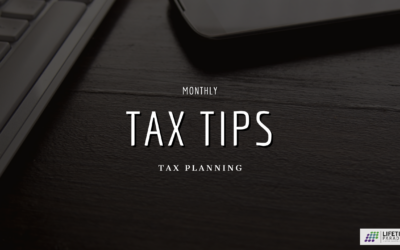Tax Planning
One Ugly Rule for Owners of S Corporations Deducting Health Insurance
Bradford Tax Institute
An ugly rule applies to how S corporation owners deduct the cost of health insurance that a corporation puts on its W-2s.
The words that make this an ugly rule are “earned income,” and this is unusual because you generally think of earned income as a good thing.
But for the S corporation owner who hopes to deduct his or her health insurance as a self-employed health insurance deduction on Schedule 1 of the owner’s personal Form 1040, the term “earned income” can create ugly results (hence the “ugly rule”).
Applying the Ugly Rule
As you likely know from our prior articles, the S corporation deducts as W-2 wages the cost of health insurance it pays or reimburses to the more-than-2-percent shareholder.(1)
On the shareholder’s W-2, the cost of the health insurance adds to the wage amount in box 1 of the W-2 but not to the wages reported in box 3 or box 5.(2)
The Form 1040 instructions (which are incorrect, or misleading at best) for how the more-than-2-percent shareholder deducts the health insurance premiums state. (3)
You can deduct the premiums only if the S corporation reports the premiums paid or reimbursed as wages in box 1 of your Form W-2 . . . and you also report the premium payments or reimbursements as wages on Form 1040 or 1040-SR, line 1a.
If you quit reading the Form 1040 instructions at this point, which could be a logical stopping point, you could easily conclude that box 1 wages control the deduction.
But no, that would be wrong. It would be too logical!
On the next page of the instructions, you find a footnote in the “Self-Employed Health Insurance Deduction Worksheet” that states:
If you were a more-than-2-percent shareholder in the S corporation under which the insurance plan is established, earned income is your Medicare wages (box 5 of Form W-2) from that corporation.
What happened? The ugly rule makes Medicare wages the “earned income.” (4)
Example 1. Ted is the sole owner of his S corporation. The corporation reimburses Ted $18,000 for his family health insurance plan, putting the $18,000 as wages in box 1 of the W-2 and $0 in box 5 for Medicare wages.
The $18,000 is Ted’s sole compensation from the S corporation for the year.
Ted’s Form 1040 tax deduction for his self-employed health insurance is zero.
Why zero? His earned income for the health insurance deduction is zero—equal to his Medicare wages.
Key point. This problem can exist when someone starts a new S corporation and does not take a salary the first year, but does have the corporation pick up the tab for the shareholder’s health insurance.
Example 2. Janet is the sole owner of her S corporation. The corporation pays her a salary of $107,000 and reimburses her $22,000 for her individually purchased family health insurance.
The S corporation puts $129,000 ($107,000 + $22,000) in box 1 as wages and $107,000 in box 5 as wages subject to Medicare taxes.
Janet’s Form 1040 tax deduction for her self-employed health insurance is $22,000.
Why $22,000? Her earned income of $107,000 exceeds the $22,000 of insurance costs.
Reasonable compensation. Janet’s reasonable compensation is $129,000 (wages plus the cost of the health insurance).
Key point. If you operate your business as an S corporation and want your full self-employed health insurance deduction, you need S corporation Medicare wages in box 5 equal to or greater than what the S corporation paid or reimbursed you for your health insurance.
Example 3. Ken’s S corporation suffered a downturn in business, which created a $180,000 loss for the year. Because the business had a bad year, Ken did not take a salary, but the S corporation reimbursed his health insurance.
Too bad for Ken! He gets zero as a self-employed health insurance deduction, and depending on his circumstances, he could pay taxes on the dollar amount of the health insurance that landed in box 1 of his Form 1040.
Example 4. Ava’s S corporation had $790,000 in net income, paid Ava $80,000 in salary, and paid $20,000 for her family health insurance.
The S corporation reports on Ava’s K-1 $690,000 of net income ($790,000 – $80,000 – $20,000). Her W-2 shows $100,000 as wages in box 1 and $80,000 in box 5.
Because Ava’s box 5 wages of $80,000 are greater than the $20,000 of health insurance, Ava deducts her $20,000 of health insurance as a self-employed health deduction on line 17 of Schedule 1 of her Form 1040.
Reasonable compensation. Ava’s reasonable compensation is $100,000.
Takeaways
The tax code definition of the box 5 Medicare wages as earned income for the more-than-2-percent S corporation shareholder creates trouble for the shareholder who has little or no Medicare wages in box 5 of his or her W-2.
And this problem can exist when someone starts a new S corporation and does not take a salary the first year, but does have the corporation pick up the tab for the shareholder’s health insurance.
If you operate your business as an S corporation and want your full self-employed health insurance deduction, you need S corporation Medicare wages in box 5 equal to or greater than what the S corporation paid or reimbursed you for your health insurance.
- See 2023 Health Insurance for S Corporation Owners: An Update and Avoid This Family Member S Corporation Health Insurance Mistake.
- See Q&A: No FICA on Health Insurance for the More-Than-2% Shareholder-Employee.
- Instructions for Form 1040 (2022), dated Jan. 20, 2023, p. 88.
- The tax code agrees; see IRC Section 162(l)(5)

SERVICES WE OFFER RELATED TO THIS TOPIC
The information contained in this post is for general use and educational purposes only. However, we do offer specific services to our clients to help them implement the strategies mentioned above. For specific information and to determine if these services may be a good fit for you, please select any of the services listed below.
The 4x4 Financial Independence Plan ℠
Retirement Planning
Asset Protection
Tax Planning
Coaching and Consulting
Your Co-Owned Business Probably Needs a Buy-Sell Agreement
Tax PlanningBradford Tax InstituteSay you’re a co-owner of an existing business. Or you might be buying an existing...
Big Tax Changes to Know for 2024
Financial Guides2024 has brought some big tax changes with it. It’s essential to stay informed about these...
The Smart Tax Planning Newsletter March 2024
Tax PlanningIn This Issue: IRAs for Young Adults Get Up to $32,220 in Sick and Family Leave Tax Credits New Crypto Tax...
Investment Advisory Services are offered through Lifetime Financial, Inc., a Registered Investment Advisory. Insurance and other financial products and services are offered through Lifetime Paradigm, Inc. or Lifetime Paradigm Insurance Services. Neither Lifetime Financial, Inc. nor Lifetime Paradigm, Inc., or its associates and subsidiaries provide any specific tax or legal advice. Only guidance is provided in these areas. For specific recommendations please consult with a qualified, licensed Advisor. Past performance is no guarantee of future results. Your results can and will vary. Investments are subject to risk, including market and interest rate fluctuations. Investors can and do lose money and, unless otherwise noted, they are not guaranteed. Information provided is for educational purposes only and is not intended for the sale or purchase of any specific securities product, service or investment strategy. BE SURE TO FIRST CONSULT WITH A QUALIFIED FINANCIAL ADVISER, TAX PROFESSIONAL, OR ATTORNEY BEFORE IMPLEMENTING ANY STRATEGY OR RECOMMENDATION DISCUSSED HEREIN.
This message is intended for the use of the individual or entity to which it is addressed and may contain information that is privileged, confidential and exempt from disclosure under applicable law. If you are not the intended recipient, any dissemination, distribution or copying of this communication is strictly prohibited. If you think you have received this communication in error, please notify us immediately by reply e-mail or by telephone (800) 810-1736 and delete the original message.
This notice is required by IRS Circular 230, which regulates written communications about federal tax matters between tax advisors and their clients. To the extent the preceding correspondence and/or any attachment is a written tax advice communication, it is not a full "covered opinion." Accordingly, this advice is not intended and cannot be used for the purpose of avoiding penalties that may be imposed by the IRS.





